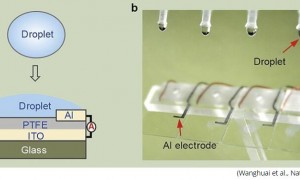Entry overview: Squirting refers to the phenomenon of expelling a considerable amount of clear fluid when a woman reaches or approaches orgasm during sexual stimulation. Female ejaculation can usually be achieved by stimulating the G-spot in the vaginal vestibule (the corpus cavernosum, named after Dr. Ernst Gräfenberg). Rarely, female ejaculation can also be achieved by external stimulation of the clitoris alone, causing the inner tissue of the clitoris to contract and stimulate the tissue of the urethra.

Basic Information
Chinese name: Squirting
Foreign name: Female Ejaculation
Aliases: vaginal ejaculation
Features: Discharge a small amount of clear liquid
definition
Female ejaculation can usually be achieved by stimulating the G-spot in the vaginal vestibule (the corpus cavernosum, named after Dr. Ernst Gräfenberg). Rarely, female ejaculation can also be achieved by external stimulation of the clitoris alone, causing the inner tissue of the clitoris to contract and stimulate the tissue of the urethra. There are two types of squirting, one is vaginal orgasm and the other is clitoral orgasm. Originated from Japanese, the English academic name is Female Ejaculation.
research history
Female ejaculation is not a new concept. The ancient Greek philosopher Aristotle had noticed its existence; in the 2nd century, Galin of Ancient Greece described the female prostate; Italian anatomist Renaldus Columbus mentioned female ejaculation when explaining the function of the clitoris; in the 17th century The German anatomist Regnier de Graaf wrote a book on female anatomy and mentioned the gushing of female fluids during sexual arousal.
Turning to the Chinese wild history, in the late Ming and early Qing dynasties, there is a written record in the "Unofficial History of Embroidery" written by the master of love. And it does not lose the amount of semen that men ejaculate. In the 1920s, Chinese sexologist Zhang Jingsheng also put forward the argument that women can squirt a third type of water during orgasm.
Obviously, squirting has long been discovered, but at the time it was unknown why women ejaculated just like men. Until 1983, three masters of sexology, Laddes, Whirlpool and Perry, found that continuous stimulation of the female G-spot can make some women rhythmically eject a small amount of fluid indirectly from the urethra, just like ejaculation. In 1978, Severy and Bennett also published a report showing that some women do ejaculate fluids other than urine from the urethra when they orgasm.
The argument that women can ejaculate just like men has been debated for decades. many people thought it was just urinary incontinence in female sexuality; until in recent years, there has been increasing evidence that this is one of the natural changes in female sexual physiology. Zheng Chengjie, the chief physician of the Obstetrics and Gynecology Department of Cathay Pacific Hospital, pointed out that in the 1950s, Dr. Grafenberg, who discovered the G-spot, also discovered the phenomenon of female ejaculation. The world has proven that female ejaculation is not a lie.
Although foreign scientists have used various experiments to prove that women can indeed ejaculate like men, many people have always been skeptical about squirting, thinking that female ejaculation should be urinary incontinence, or the secretions are more than usual. based on the gaps in medical research and the common sense given by general sex education (that is, women do not have the necessary organs to ejaculate), ordinary people generally do not recognize squirting. Often thought to be urine, or the illusion of adult movies. Or it may be confused with the phenomenon of vaginal secretion in women. Another reason why female ejaculation is questioned is that not all women can achieve the realm of squirting.
While many in the medical and scientific communities are now acknowledging the existence of female ejaculation, there is still a huge gap in when there will be reliable scientific data explaining the process of female ejaculation and the source of the ejaculate fluid.
physical substance
The female urethra is surrounded by urethral glands, paraurethral glands, Skirn's glands, female prostate, corpus cavernosum and G-spot cavernous tissue. The Skene's gland is one of two of these glands that have openings to the urethra, while the others are commonly called urethral glands in place of all of the above. In addition to fluid from the urethral glands and urine from the bladder, these fluids can also be ejected from the vaginal opening during sudden muscle contractions.
During early growth, all fetuses were essentially female and had vestigial organs, suggesting that they were subjected to a combination of testosterone and estrogen before developing into male or female reproductive organs, respectively. People of different genders have similar organs and tissues. For example, both sexes have nipples that are used for sexual stimulation, but female nipples also play a nurturing role. The clitoral tissue and the penis are particularly similar in that they can both engorgement and erection in a sexually stimulated state, eventually reaching orgasm. Human anatomy has shown that in women there is tissue similar to that of the prostate in men, which produces most of the semen. That is, a clump of tissue around the urethra, called the corpus spongiosum, plays the same role in female ejaculation. The urethral corpus cavernosum surrounds the urethra and consists of more than 30 glands that become erect during sexual arousal. During sexual arousal, the fluid secreted by these glands is alkaline, just like a man's prostatic fluid. These fluids are the body fluids that women expel when they ejaculate.
On the front wall of the vagina, two to three centimeters away from the vaginal opening, there is a highly sensitive area. When the clitoris is not stimulated, this area is more prone to orgasm when stimulated by pressure. The size of the G-spot varies from person to person, and is generally the size of a penny. It is not a point, but an area. Go in with your finger and bend it upwards slightly to find it. This area is made up of complex blood vessels, nerves, surrounding ducts of the paraurethral glands, and bladder neck tissue, which is similar in structure to a man's prostate. The G-spot forms its own area around the urethra, and there is a small hole leading to the urethra. If the G-spot is stimulated to a certain extent, it will bulge like a fold and bend, and continue to stimulate, and a little fluid will be secreted in the bulging tissue. into the urethra through a small hole. This phenomenon is reported to be "G-spot ejaculation", and some reports are negative, thinking that it is urine, which is squeezed out of the body due to muscle spasms caused by sexual stimulation.
academic component
Dr. Beverly Whipple, Dr. John Perry, Dr. Gary Schuback, Dr. Milan Zaviacic and Dr. Cabello Santamaria conducted related studies, but their results were limited. While the available information does not yet explain the source of the ejected fluid, analysis of it by multiple scientific groups suggests that it is not urine (because the indices of urea and creatinine are too low).
As for what exactly is female ejaculation? Zheng Chengjie said that many sexologists analyzed the composition of the liquid ejected by women during ejaculation. The ingredients are also quite different. The components contained in secretions include prostaglandin-specific antigen, urea nitrogen, etc. In other words, women who can ejaculate still have male relics in their bodies. Zheng Chengjie joked that men would feel ashamed if they couldn't ejaculate, and women shouldn't be too concerned about not ejaculating, because it means that you don't have any masculine signs on your body, which is more feminine. And the inability to ejaculate does not mean there is no orgasm, squirting is just another manifestation of orgasm.
In addition, a Spanish study pointed out that when a woman is sexually excited, the secretions of the anterior vaginal wall of women contain a lot more PSA components than the secretions of the posterior wall. Obviously, not only does the female prostate exist, but we must correct the past assumptions about the source of vaginal secretions. cognition.







